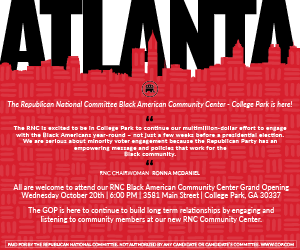On October 17, 1932, 52-year-old Denna Strickland, and her daughter, 25-year-old Estella Strickland, were killed by bailiff Sam Thompson in their home in Coweta County near Newnan, GA. Denna Strickland and her husband, Ector Strickland, had nine children including Estella Strickland. According to their death certificates, Denna Strickland worked as a housewife and Estella Strickland worked in housekeeping.
According to the newspapers, Thompson arrived at the Strickland home, accompanied by two white men, Theo McDonald and Cecil Hunter, to attempt to arrest 19-year-old M.C. Strickland for his involvement in an automobile accident involving a white man’s wagon. Days earlier, Strickland had damaged a wagon and Thompson told him and his father, Ector Strickland, they needed to pay $3. Ector Strickland repaired the damage to the wagon but Thompson still threatened to arrest them if the $3 went unpaid.

When they arrived four days later looking for M.C. Strickland, they were told by Denna and Estella Strickland that he was not home. Two of Denna Strickland’s other young children, Onelious and Buford Strickland, were also present. Thompson then entered the home and began searching the residence without a warrant. He located an unloaded pistol and put it in his pocket; this was the only gun in the house.
Buford Strickland remained on the porch while the other three Stricklands remained inside the residence. Buford Strickland witnessed the bailiff return to the front porch where he began threatening to make arrests. The Stricklands shouted back and refused to say anything else. The bailiff then called for the other white men before opening fire on Denna, Estella, and Onelious Strickland in the hallway of their home. Denna and Estella Strickland died while Onelious Strickland miraculously survived a shot to the chest. All three white men claimed they acted in self-defense when they were attacked by the two Strickland women.
After their murders, the Atlanta Daily World published almost 20 articles in a three-week period to raise awareness about the tragedy. The narrative remained divided along racial lines. The white paper published a version of the story saying the men acted in self-defense when the women threatened them with a gun and an ax.
The Atlanta Daily World, a Black newspaper, published quotes from Bufford and Onelious Strickland insisting that neither women attacked the men. According to their accounts, both the unloaded pistol and the ax had been removed from the house by the white men before the shooting began.
Community members wrote letters to the NAACP to get them involved in the horrendous murder of two women by police. The NAACP became quickly involved and organized a community fundraiser. Through newspaper articles as well as letters sent to and from the NAACP, it is clear that the community in Coweta County cared deeply about the women and the needless violence visited on them. They begged for the NAACP and other organizations to take action and obtain justice for the two Strickland women. Based on the NAACP papers and corroborated by the news articles, there were protests in Atlanta against police brutality. Prior to the Strickland murders, other Black community members in Newnan and Atlanta had been murdered by police without consequence.
According to an article from Nov. 7, 1932, bailiff Thompson went before a judge and was released. Further details about the hearing remain unknown. The letters contained in the NAACP papers mention that the district attorney, William Y. Atkinson Jr., planned to take the case to the grand jury in March 1933. It is unknown (and unlikely) that happened or that the bailiff ever faced repercussions for his crimes. In 1935, he was sworn in again as an officer of the law.
Legal Status
This case drew a significant amount of local media attention and involvement from the Atlanta Branch of the NAACP. According to newspaper articles, the NAACP paused its involvement a few weeks after joining the case due to a fundraiser. One article from the Atlanta Daily World mentioned that bailiff Sam Thompson went before a judge and was released on Nov. 2, 1932. While there appears to be no additional media coverage about the murders, the NAACP files mentioned that the district attorney, William Y. Atkinson Jr., planned to take the case in front of a grand jury in March 1933. No further legal action is known.
Join our email list to stay connected.






